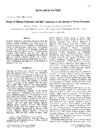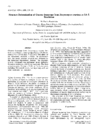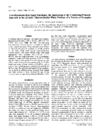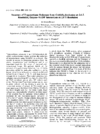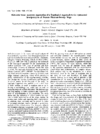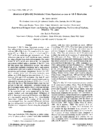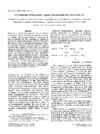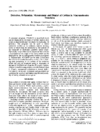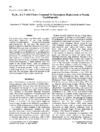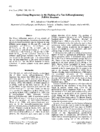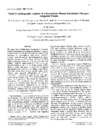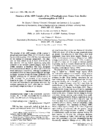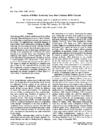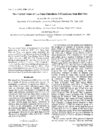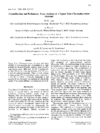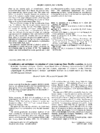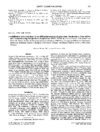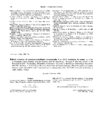issue contents
March 1994 issue

Cover illustration: The overall folding of the salmon trypsin molecule. Courtesy of A. O. Smalas and A Hordvik.
research papers
X-ray diffraction studies of the binding of a series of sugars to D-xylose isomerase are reported at 1.6-1.8 Å resolution. It is shown that there are two directions of binding. A specific binding motif has been identified.
The structure is a tetramer with two divalent metal ions per monomer. The structure refinement was performed with the GROMOS program package.
PDB reference: 1dxi
A recently reported method [Subbiah (1993). Acta Cryst. D49, 108-119] is applied successfully to obtain crude low-resolution envelopes for five varied and difficult macromolecules. Only Fourier-amplitude data, with no prior phase information, are used to overcome the crystallographic phase problem at very low resolution.
The enzyme uses NADPH as a co-factor and is an important target for antitrypanocidal drug design. The structure was solved using molecular replacement and was refined to an R factor of 16.1% with data between 8.0 and 2.6 Å resolution.
PDB reference: 1tyt
A topological analysis method of medium-resolution electron-density maps is described in terms of critical points. A procedure is proposed for the automated recognition of protein secondary structures.
Ferredoxin I crystallizes in space group P21 with two molecules per asymmetric unit. Refinement by molecular dynamics simulation gave a final R factor of 17% with X-ray data up to 1.8 Å.
PDB reference: 1frr
Biosynthetic arginine decarboxylate initiates polyamine synthesis in plants and bacteria and exhibits sequence homology to the eukaryotic ornithine decarboxylases. It has been crystallized in space group P41(3)212 with one tetramer per asymmetric unit.
Algorithms for detecting cavities in biomacromolecules and for measuring their volumes are described and demonstrated.
Experience with the heavy-metal cluster compound Ta6Br14 in the structure determination of two large proteins is summarized. The cluster compound is a suitable candidate for producing single-site derivatives in large proteins.
Crystals of d(CGCACG)·d(CGTGCG) show that similar packing patterns can lead to different space groups.
A preliminary structure of an interleukin-l receptor antagonist protein, determined by X-ray crystallographic methods, is reported.
PDB reference: 1irt
The high-resolution structure of a nucleotide complex of the glycolytic enzyme phosphoglycerate kinase is reported.
PDB reference: 1php
An encouraging step forward in the ability to use X-ray diffuse scattering information is presented. Analysis of this scattering from yeast initiator tRNA crystals reveals substantial disorder in the biochemically relevant anticodon arm where atomic displacements are locally correlated between neighbouring base pairs but quite uncoupled from the more rigid remainder of the molecule.
Two new crystal forms of glutathione 5-transferase 3-3 have been obtained. The structures of these new crystal forms have been determined and their crystal packing environments have been compared.
A lipase from Chromobocteriun viscosum has been purified to homogeneity and crystallized in a form suitable for X-ray diffraction analysis. The crystals diffract to a resolution of 2.2 Å and the structure solution by multiple isomorphous replacement is underway.
short communications
A designed mutant of the enzyme glutathione reductase, consisting of two point mutations, shortens the crystallization time by a factor of forty, most probably by facilitating nucleation.
Two different crystal forms have been obtained, one suitable for X-ray analysis.
Crystallization of tetra-heme cytochrome c from Desulfovibrio desulfuricans ATCC 27774 in space group P6122, a = b = 61.84(4), c = 109.7 (2) Å, led to X-ray data to 1.75 Å resolution, Rmerge(I) = 5.3%. A molecular replacement solution was obtained with D. vulgaris cytochrome c (43% homology).
Correction to Acta Cryst. (1993). D49, 561-571.


 journal menu
journal menu









